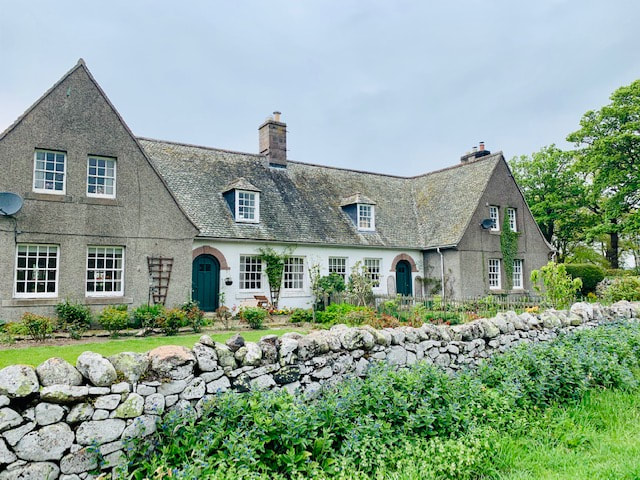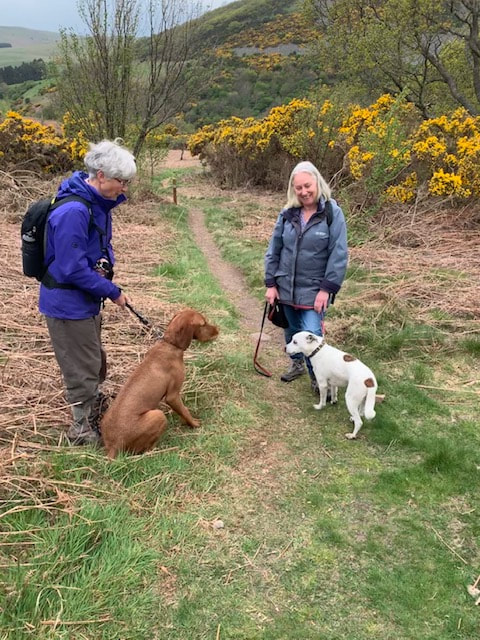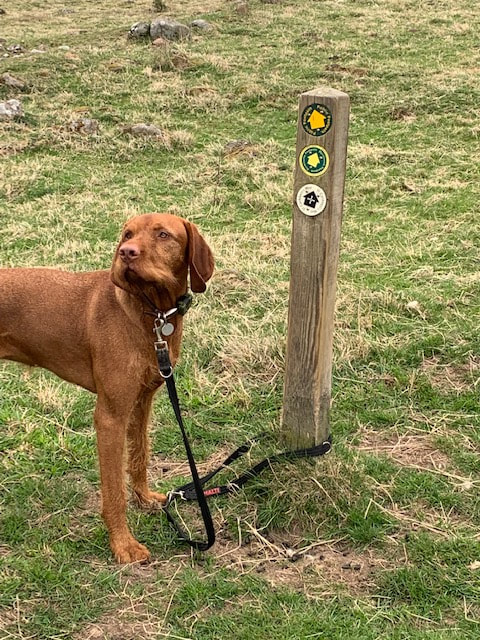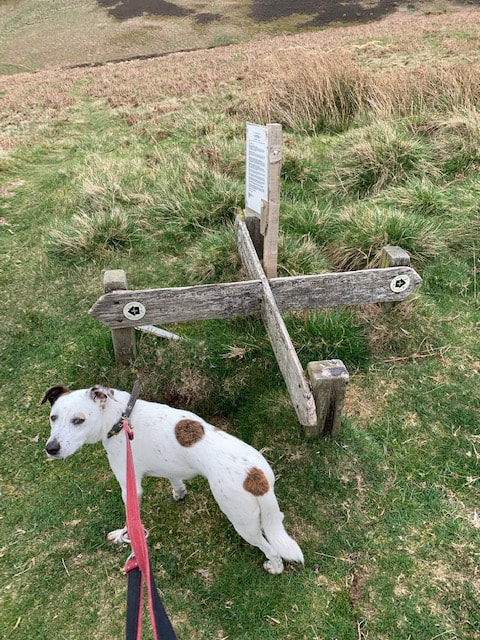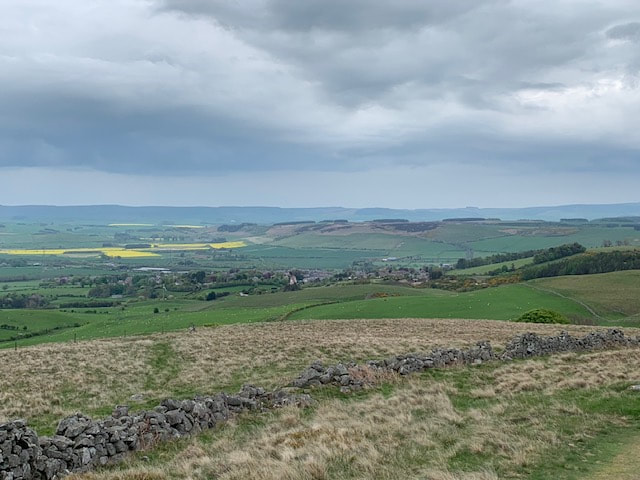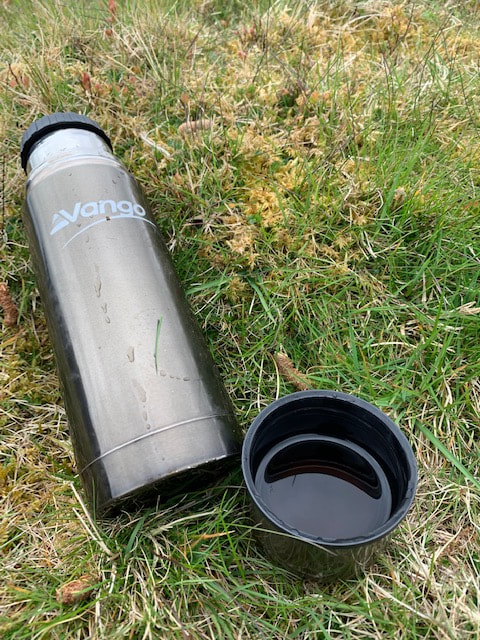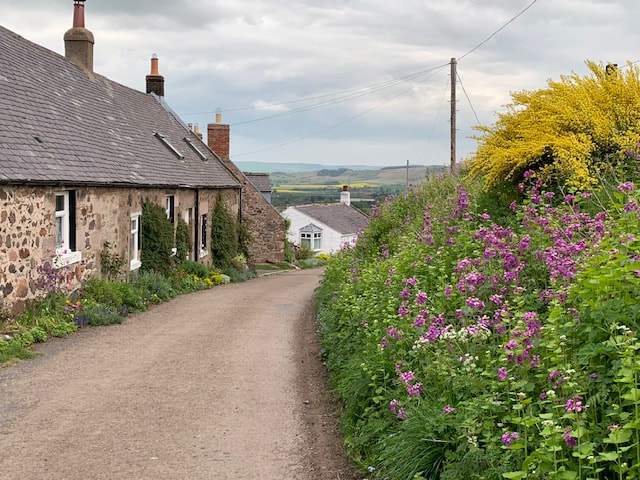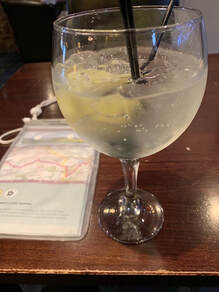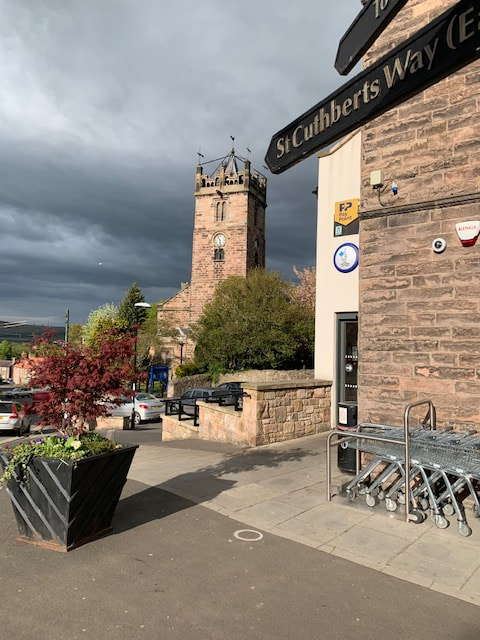Southernknowe to Wooler (and back to Southernknowe)Earworm of the Day: Love & Hate by Michael Kiwanuka Slept badly again. Hamish and I had elected to sleep on a single bench seat in the caravan which was cosy but very very uncomfortable. My hip ached all night and I was pinned against the wall by my canine companion who curled up behind my knees and wouldn't move. Other than a bad night's sleep I loved being at Southernknowe, and woke at the crack of dawn-chorus as a chaffinch sang its heart out somewhere above the metal roof. I'd arrived at Southernknowe to find my friend R not home yet and I sat in the garden on a bench, basking in the sun, boots off and feeling nothing but contentment and relief. Along with Lilliard's Edge, the stretch from Yetholm into the College Valley was the bit of the walk I'd looked forward to most. And it had been all that I wanted it to be. Joyous, silent, warm, spacious. Ros provided gin and a hot bath in that order and I spent a lovely evening chatting to her and her partner, a shepherd who had spent some of his youth about a mile from where I live so we knew lots of people and places in common. Much wine was drunk (I think) and that along with a lovely meal and a post dinner dog-walk, was enough to have me ready for bed just after 9pm. I loved the caravan at the bottom of the garden, among the chickens which raced to the door in the hope of food every time I appeared. I miss my hens! This morning, reality set in again. Is there anyway I could get out of doing the rest of this walk? My foot was a total mess and it looked as if my blisters might have other blisters inside them or something. I had popped them, drained them, cleaned them and re-compeeded but they had re-filled and I wasn't sure what to do. I've never really had bad blisters before. I lay in bed chanting away quietly to myself - I really don't want to do this I really don't want to do this I really don't want to ... R had made a stunning breakfast, porridge and toast and lots of tea and we planned the day ahead. R was coming along for part of the walk and it looked like it would be a late start as we waited for another friend to join us. I was so relaxed here - it was like a separate world where neither neither looming political melt-down or the rest of The Way existed. I went back to the caravan to listen to music and re-pack my rucksack. I would not need everything today as I was returning to the caravan that evening. The College Valley had fascinated me for a while - tucked into the very top corner of Northumberland - with the ridges along to the north forming the boundary with Scotland. Again, people led border lives, and lives which were not 'neither one nor the other' but instead were 'both'. My friends were Scottish but lived two miles from a border which was nothing more than sheep wire and wooden gates. How was any form of hard border workable here? The Valley is owned by the Sir James Knott Trust - a grant-making charity which seeks to 'improve the conditions of people living and working in the North East of England' - which bought the estate in 1953. The Valley is now managed by a separate company under a Board of Directors. Cars are only permitted as far as the car park at Hethpool unless you have bought a permit from Savill's in Wooler. We were ready to set off at the end of the morning, three of us and two dogs and parked up at Hethpool. Although I had been looking to spend time walking solo - it was great to have company, particularly from two brilliant local women who knew the walk. Both are involved in a project to raise awareness of the plight of refugees and to raise funds. The programme of activities includes a walk from the holy island of Iona to the holy island of Lindisfarne in April 2020 - and we discussed various ways in which themes of exile and sanctuary could be picked up along the route. I told them the story of King Loth of the Votadini, and his daughter Princess Thenew, the mother of St Mungo. It's a major fundraising and awareness-raising goal and I wish them much much luck. We left Hethpool with its beautiful cottages and headed downstream along the other side of the College Burn - this stunning clear burn flowed between banks of vivid gorse and would soon join the River Glen as it headed to join the River Till. The Till itself would join the Tweed next to the ruins of St Cuthbert's Chapel. Another place to check out another time. We meandered about among bluebells and stretches of rock - but the ticks were out in force that day. Hamish didn't get too badly bitten but the wee beasties were everywhere. Not sure even St Cuthbert would have had much time for them. The Valley's wild goats were about too, grazing in front of us and only moving away slowly. A reminder of my childhood home where a herd of wild goats roams the Valley of the Rocks. We parted company at Torleehouse - I didn't want anyone watching me puff my way up the main climb of the day. But I missed the company when they had gone. Skirting the buildings and passing through some curious sheep, I started the climb up alongside Yeavering Bell and decided to take a look. More goats grazed the slopes, but once we were clear of these, Hamish could spend some rare time off lead before we reached the open moorland. And do you know what? The hill wasn't too bad. Maybe the exercise was starting to have an effect. We stopped for lunch at the highest point and all was quiet: I hadn't known much about Yeavering Bell before the walk prep - other than that it is the name of a range of soft mohair/Wensleydale blend yarn produced by the lovely Alice at Whistlebare Yarns somewhere close by. For those who are not woolly-minded, Yeavering Bell is also the site of an ancient and large Iron Age fort but also contains a neolothic burial cairn. It was a tribal centre for the Votadini, those early Celtic people who had populated East Lothian, Dun Edin (now Edinburgh) and down as far as the Tyne (the Newcastle one not the Haddington one). What a strong people they must have been to control and make lives in such a huge area - and what factors had led history to forge a national border across what had once been the landholding of one tribe? Were those people I had met leading border lives, heirs of the Votadini in the way that they moved back and forth across a landscape which stretched across a geographical as well as historical canvas? Not for the first time, I wondered what the Votadini had called themselves. Note to self to visit the exhibition on the Traprain Hoard while it is in Haddington. Looking back over the Cheviots I could still see Scotland, but as I headed away from Yeavering Bell, the views homeward disappeared for the last time. We passed the smallest signpost I've ever seen (Hamish next to it for scale): and, with Tom Tallon's Crag to our left, reached the open moorland which stretched ahead between us and Wooler. We headed for a small plantation and some cattle glared at us and then we were at the top end of The Trows. In all my staring at the map that morning, worrying about hills, I hadn't appreciated that this might be boggy. And it was. I stepped from tussock to tussock - I haven't had to make my way across a bog for a long time but perhaps the technique never leaves you. About a third of the way across it seemed that this bog was a metaphor for a journey through life, especially a life edged with depression and anxiety. The really tough bits make it hard to raise your head up and see where you are going; you remain close-focused in fear each step will let you fall. I was going to end up as submerged as Carver Doone. Every tussock of grass successfully reached is a major achievement, and it's tempting to just stay where you are perched. Lightness of step and quickness of movement are key to success but that's not always possible when you are weighed down. Sometimes when you look ahead it seems you haven't really achieved much. Making the effort to look up, I saw that Hamish had had enough of all the floundering about and skipped across to the side of the bog, where a raised bank allowed a dry-footed if precarious route around the side of the bog. Yep - enough floundering for me too. I followed the dog. As we left the bog behind, the views opened up to the south and I decided to have a cup of tea as a reward for the successful passage through the Slough of Carver Doone: My foot had started to hurt quite badly and I stripped down to bare skin and re-socked. It does help - for a while - but this walk seemed to be a slow one and I couldn't really work out how much longer it would take. The path itself now was not hard at all - well trodden and part of a wider network I thought. I looked across to the east and saw two of the points I would reach the next day: The woods containing St Cuthbert's Cave, and the collection of woods above Fenwick. The path ahead was a joy to look at: 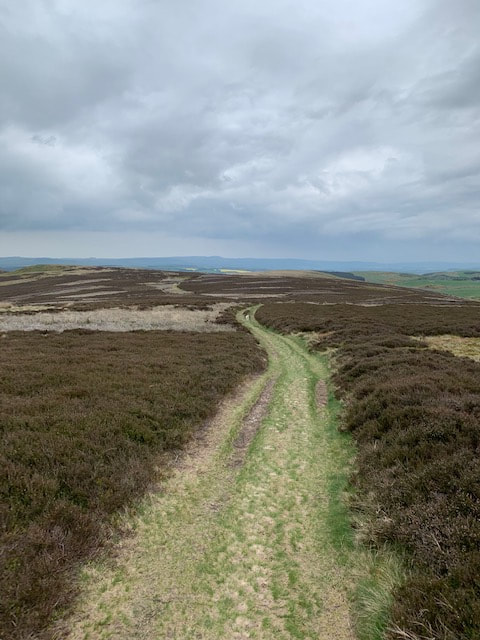 ... grassy and smooth.... and walking along it was like being back in the Lammermuirs. Green, brown, big views, skylarks and grouse muttering away in the longer patches of heather. I could see Wooler down below and ahead. The earworm kept me going for a while (thanks Michael) and a striking rock formation came into view - running alongside the top of Humbleton Hill. Another fort. More signs of early living at the edge of these hills. I spent a while lost in thought and worry. It was now a good bit after 5 and I really did need the chemist for more Compeed plasters. I hoped it closed at half-past. And I spent a while lost in thoughts of my aching foot which caused me to miss the next important Way marker. I found myself on a beautifully sheltered old green lane where I could let Hamish run on ahead a bit and hobbled along. I heard Hamish barking out of view ahead and found him greeting a fell-runner, the first person we had seen all day. Soon we reached a noticebaord about the people who had lived on Humbleton Hill and came to a junction with a road at a very pretty hamlet indeed. Not where I was supposed to be. I dug out the phone and hoped the GPS might correct itself in a few seconds but I was Off The Way and in Humbleton. It was a stunning wee place, but it meant I had further to go and it would take more time. A very nice local pointed me to a shortcut across a field. One thing about England is that the countryside bristles with little footpaths, stiles and wooden signs. It's a real surprise. But then, what you gain in added signage you lose in general rights of access across most countryside and inland water. We walked past a caravan park and out onto a road into Wooler reaching a deserted main street. The chemist had its lights on and I tapped on the door making some general are you open? gesture and then a can I bring my dog in? one. Yes to both. Open until 6pm folks. I resisted the temptation to buy All the Compeed and bought a pack of large and a pack of mixed. And some shocking pink nail varnish for my toes which might be on display if I had to take my boots off on Friday. I liked the glittery green but thought it might all look a bit fungal. The pinker the better in this case. I passed a couple of bars with men hanging around outside smoking and then found another - the Number 1 Hotel and Wine Lounge. It looked a bit well-to-do but I breezily hirpled in and spent five minutes (maybe more) selecting a gin. The staff were lovely - despite the fact that a scruffy oik and dog had just limped in they brought a huge gin for me and a bowl of water for Hamish (and made a fuss of him too). I phoned R to come and collect me - she'd been worried about where I was - and then realised I couldn't even remember the name of the gin. I was shattered. I left the pub (which I would definitely recommend - the pub, not the leaving of it) and headed up to the Co-op to meet R. A group of teenage girls were occupying the bench outside the Co-op and I squeezed in.
They soon moved off and I enjoyed the view. Two men headed towards me under a copse of cherry trees and a whirl of breeze had them showered in cherry blossom as if for a newly wed couple. They realised and laughed. The late sun made Wooler look glorious and I could see where i needed to go tomorrow. Comments are closed.
|
Archives
January 2024
Categories |
Proudly powered by Weebly

